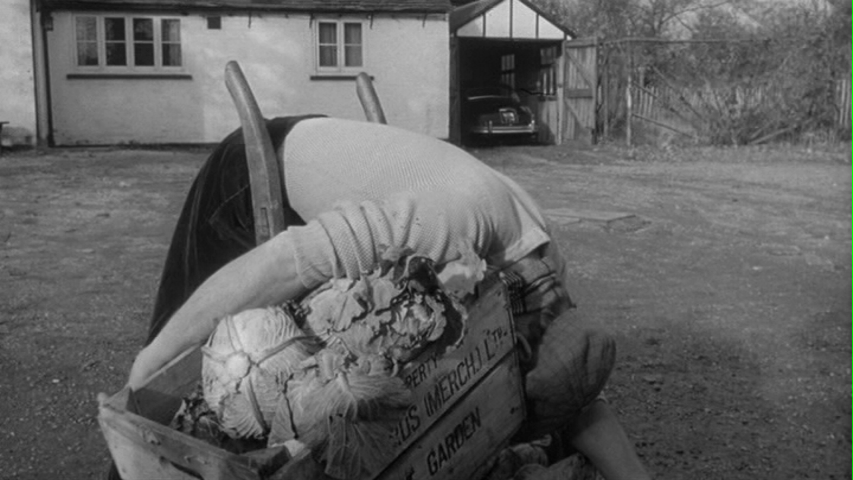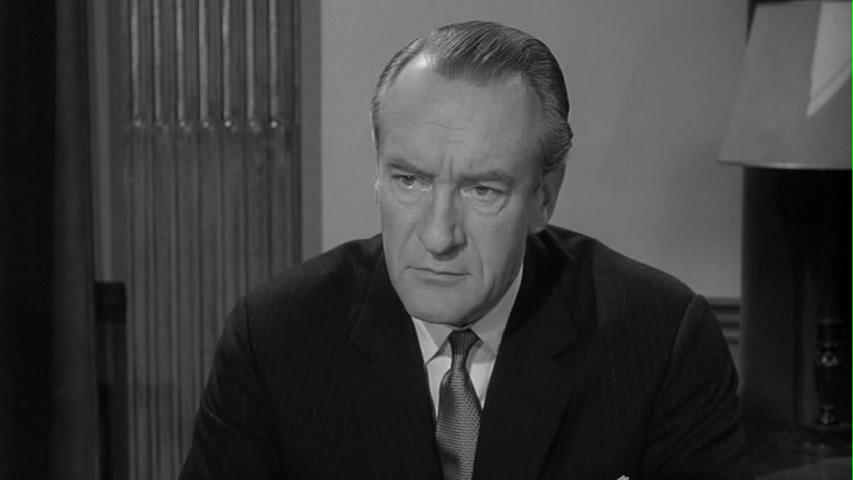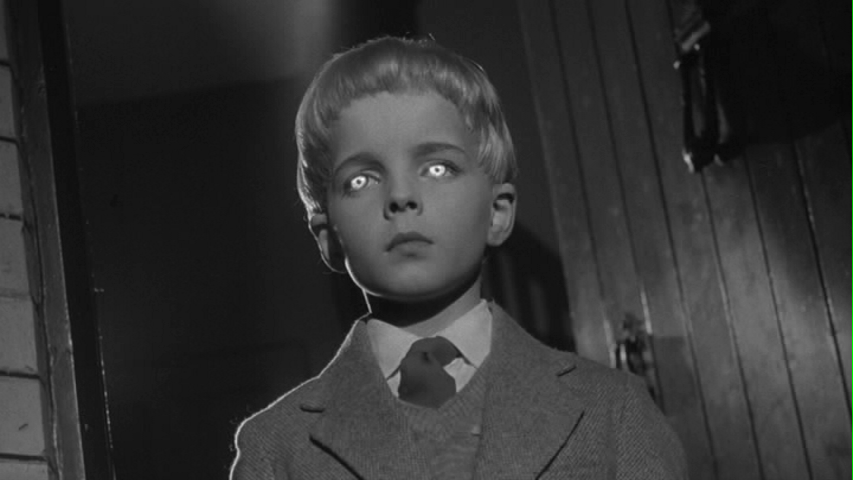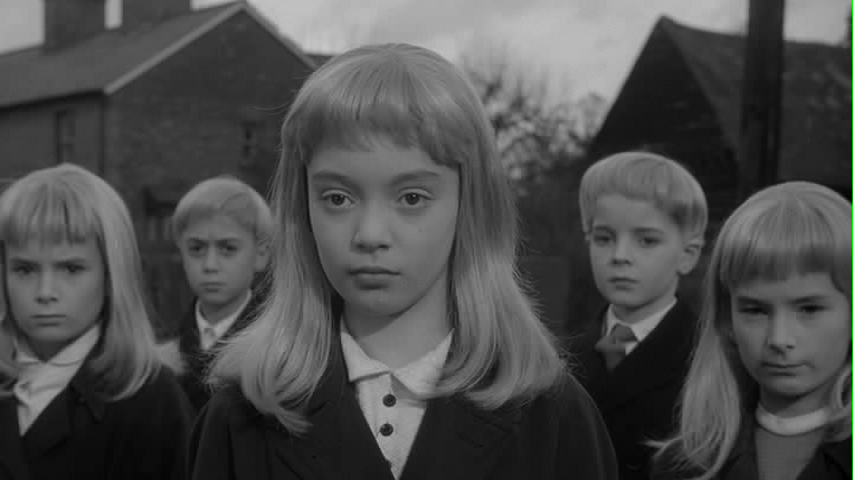|

Synopsis:
In a small British village, twelve emotionless blonde children with extraordinary intellect are mysteriously born at the same time. A scientist (George Sanders) whose wife (Barbara Shelley) has given birth to one of these odd children (Martin Stephens) becomes their teacher, and learns that their powers may be more destructive than anyone could have imagined.
|
|
Genres, Themes, Actors, and Directors:
- Aliens
- Evil Kids
- George Sanders Films
- Horror
- Mind Control and Hypnosis
- Science Fiction
Response to Peary’s Review:
As Peary notes, this “scary, well-made movie” — a “loose adaptation of John Wyndham’s novel The Midwich Cuckoos” — is “a top-notch horror film” which features “impressive atmospheric direction by Wolf Rilla” (who never made another “important film”). As in Val Lewton’s horror films of the 1940s, Rilla generates tension primarily through atmosphere and suggestion rather than explicit violence; the opening sequence, for instance — in which villager after villager collapses in the middle of their daily business — is truly frightening in its implication of sudden collective powerlessness. Indeed, throughout the film, we’re kept in suspense about what exactly has caused these mysterious children to be (virginally) conceived and then born — we can surmise that they’re alien spawn of some kind, but we never learn this for a fact, nor do we understand why or how they’re able to grow (both in utero and out) at nearly twice the normal human rate.
While Village of the Damned works perfectly well on its own as simply a taut, enjoyable horror flick, the presentation of other-worldly children who share a collective brain and have the power to make the adults around them do whatever they wish remains ripe for thematic investigation. In some ways, they’re clearly an allegory for the Communist Scare of the 1950s — emotionless beings who have invaded an idyllic Western town, and must be destroyed (by decisive force) before they “take over” (though their icy blonde hair makes them appear more like Aryan cogs than Russian workers). Others (see, for instance, the Not Coming to a Theater Near You review link below) have suggested that Village of the Damned represents a thinly veiled exploration of sexual mores in the 1960s, when women’s right to control their own reproductive potential was squarely in confrontation with religious mandates. Regardless of one’s deeper analysis, however, the unsmiling children — with their glowing, penetrating gaze (the film’s only concession to special effects) — remain an iconic trope in the history of horror cinema.
Note: While Peary argues that this was the first film “to exploit… the horror potential” of “children-as-monsters”, the kids here — with their odd blonde haircuts and bangs — bear more than a faint resemblance to “evil” Rhoda Penmark in 1956’s The Bad Seed
Redeeming Qualities and Moments:
- The creepy opening sequence

- George Sanders as Gordon Zellaby

- Barbara Shelley as Sanders’ wife, Anthea

- Martin Stephens as Sanders’ “son”

- The eerie scene in which the “one year old” babies teach each other how to open up a trick box with a chocolate inside

- Geoffrey Faithfull’s b&w cinematography

Must See?
Yes, for its status as a classic British horror flick. Remade in 1995 by John Carpenter, and followed by a pseudo-sequel (Children of the Damned) in 1964.
Categories
Links:
|







One thought on “Village of the Damned (1960)”
A must – an absolutely brilliant and fiercely original sci-fi flick that holds up well on repeat viewings. You’ll want to return to this from time to time.
According to Steve Haberman’s very informative and highly recommended DVD commentary, the film version of the novel is rather faithful (as opposed to a “loose adaptation”). Though it’s not impossible to find (depending on what you want to pay), it’s one of those books I always meant to get to – and it could currently be out-of-print.
It’s true that “regardless of one’s deeper analysis” (this film is, of course, one among many allegories), ‘VOTD’ works marvelously without interpretation. And the actual intent could be even simpler than the connection to Communism: i.e., sometimes a scary kid is just a scary kid (or kids).
Every time I see this movie, it always seems to be over before I know it. One wouldn’t guess from its leisurely (and, as a result, chilling) pace at the start, that the film would snowball as it soon does. Rilla’s direction is masterful throughout.
Much has been made of the fact that this is one of Sanders’ few ‘sympathetic’ roles. Yet I find, though his approach is certainly quieter here, his basic character is very much in sync with his overall work: a man with a sense of superiority. He feels kinship with these kids and is only forced to outwit them when the fate of the human race is at stake. (Among my favorite film quotes: “I must think of a brick wall.”)
Until I heard the commentary, I didn’t place Stephens as Miles in ‘The Innocents’. He’s almost unrecognizable here.
All told, this is one ripping yarn!